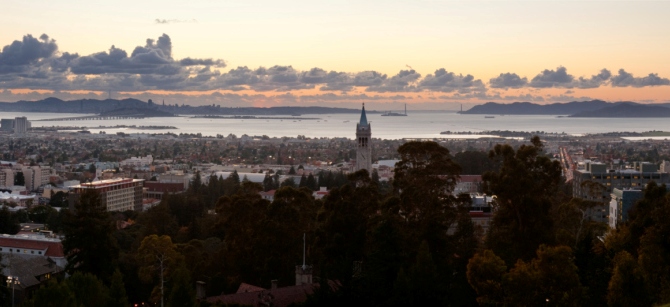Universities could be getting some last-minute relief from cap-and-trade

California universities appear to be in line for some relief from the state’s imminent carbon pollution fees.
Implementation of California’s controversial cap-and-trade program for greenhouse gases is only four months away, meaning it’s crunch time for the state’s Air Resources Board. On Thursday, the board will stage a dry run offering likely participants an opportunity to practice bidding on California carbon allowances — and allowing the ARB a chance to test its platform.
Not like it doesn’t already have its hands full. For months, cap-and-trade-eligible emitters including private businesses, military bases, universities, and waste-to-energy power-plant operators have been crying for exemptions under AB 32, arguing that they would suffer undue financial hardships.
The message is getting through in some cases, given the Board’s plan to soften the blow on state universities running combined heat-and-power (also called CHP or cogeneration) facilities, which simultaneously generate electricity and heat.
In an August 24 letter to state assemblyman Nathan Fletcher that was obtained by KQED, Air Board chair Mary Nichols explains that the board doesn’t want to disadvantage the nine California universities covered by the cap-and-trade program (meaning they emit more than 25,000 metric tons per year of greenhouse gases) simply because of emissions from a combined heat-and-power plant.
“California has a long history of supporting CHP,” Nichols writes. “Public and private entities that have taken steps to build or purchase combined heat-and-power facilities should be rewarded for their actions, not penalized.”
Nichols’ plan, as outlined in the letter, is to exempt all steam and waste heat emissions, which qualify as greenhouse gases, from cogeneration facilities at universities until 2015.
Before last week, it wasn’t clear how the board would respond. As the OC Register reported on August 20, the nine cap-and-trade-eligible universities — CalTech, Cal State San Diego, Cal State San Jose, UC Davis, UC Irvine, UC San Diego, UCLA, UCSF, and private Loma Linda University — chafed at the idea that they’d be hit with a big bill by the cap-and-trade program. The UC system alone might’ve been on the hook for up to $25 million. For two years, at least, that weight would appear to have been lifted.
“The universities are somebody we want to make sure they can handle what we’re sending them,” ARB spokesman David Clegern said in an interview.
Flighty businesses, too. On August 13, The Sacramento Bee reported that the Air Board was considering easing the burden imposed by cap-and-trade on companies deemed to be at risk of fleeing the state: what’s known as the “leakage” effect.
“Obviously we don’t want industry to leave the state, but we want them to meet the emissions requirements,” Clegern told the Bee. One potential solution he offered is for the Air Board to hand a finite number of free carbon credits to high-flight risks, potentially saving some companies millions of dollars a year — and presumably preventing a move to Nevada. But to critics who already consider the system ripe for manipulation, that could sound a bit too easy to game.
